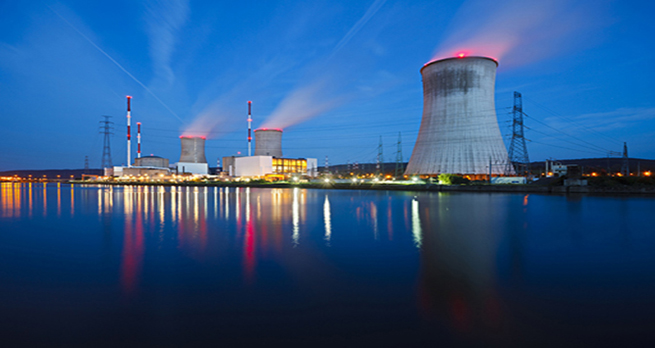1.2.5 Some uses of radioactivity
The radioactive nature of some isotopes and the emission of particles can be put to good use.
Four examples are given below but there are many more applications. You will be shown more in the activity at the end of the week – Isotope trumps!
Americium-241
Americium-241 is used in smoke detectors. It is an alpha emitter and the alpha particles ionise the air molecules in a chamber open to the air, so that the air molecules now carry a charge. The charged ions allow a tiny current to flow. If smoke particles enter the chamber this current is disrupted and an alarm sounds.
Carbon-14
Carbon exists in the organic molecules that make up the cells of living organisms and some of this carbon will be radioactive carbon-14, a beta emitter.
Plants can fix carbon from the air so that the amount of carbon-14 in living organisms is roughly constant throughout their lifetime and reflects the amount of C-14 in the atmosphere at the time. Once an organism dies, the C-14 will start to decay – the rate of this decay is known.
If you measure the amount of C-14 in a sample today it is possible to trace back and work out how old the sample is. This has been very useful in archaeology and palaeontology.
Iodine-131
Iodine-131 emits beta and gamma radiation and can be used to treat thyroid problems, such as thyroid cancer or an overactive thyroid, where treatment requires destruction of some of the cells within the thyroid.
When a capsule of I-131 is swallowed, it is absorbed into the bloodstream before concentrating in the thyroid gland. The radiation from the I-131 will destroy the cells locally – which, in this case, is the desired effect.
Technetium-99
If technetium-99 is introduced into the body it can be used as a tracer. For example, it can show the blood flow through the heart or the brain. The Tc-99 will flow with the blood and emit gamma radiation that can be detected and imaged. This can build up a picture of how the blood is flowing and into what areas. The Tc-99 decays at a good rate for this use and only lasts in the body for a day, with a very low risk of damage.
Tc-99 is produced from the decay of molybdenum-99. In turn, this Mo-99 is usually created commercially by fission of uranium in nuclear reactors. It is a fission product, and these are discussed in the next section.




